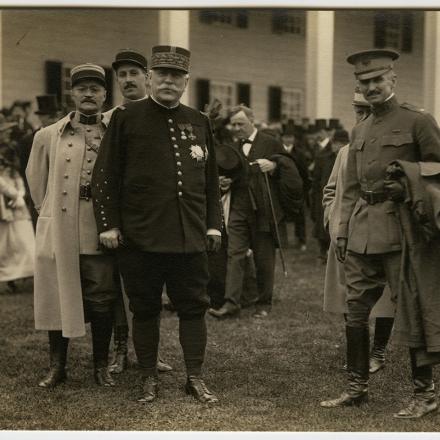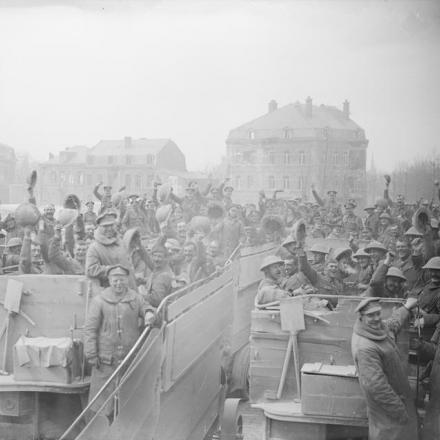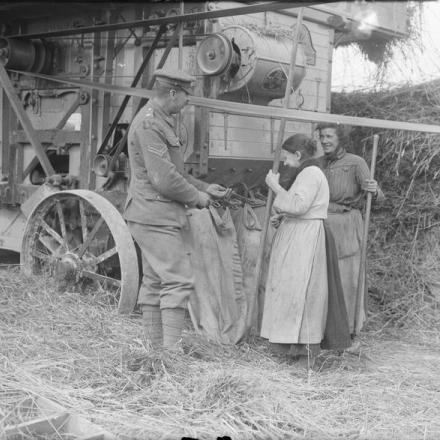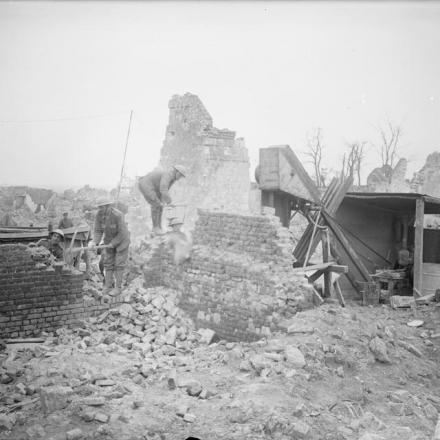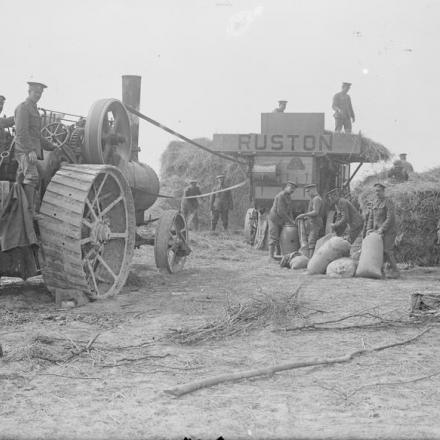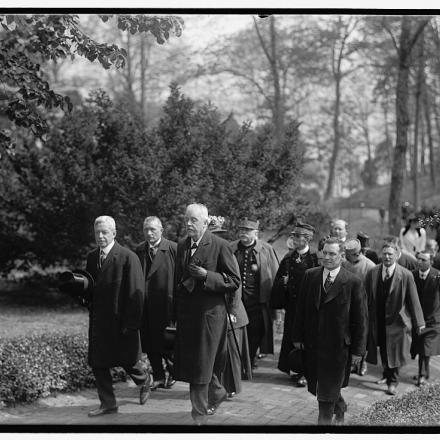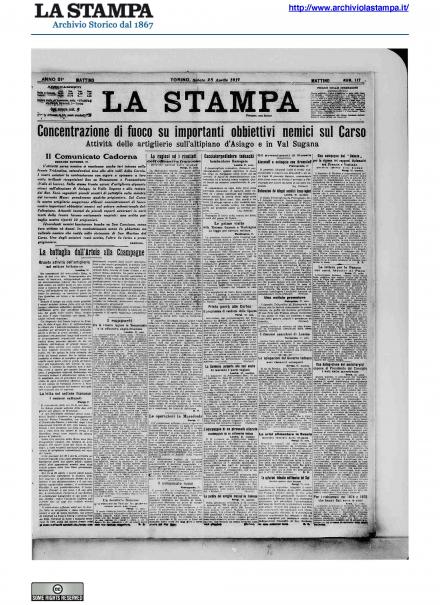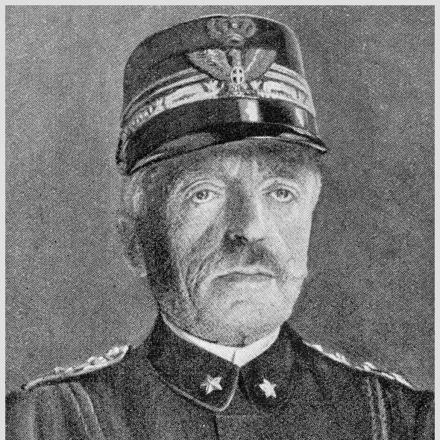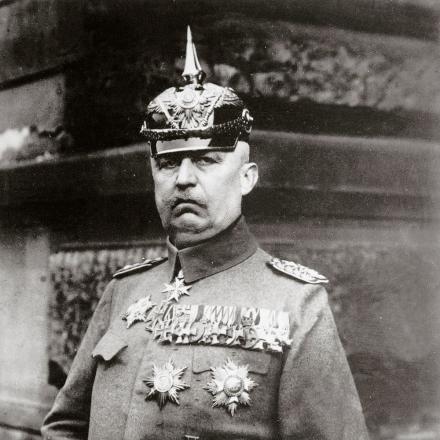Coscrizione obbligatoria in USA
500.000 tanto per iniziare. Sarà il numero di cittadini americani presto chiamati sotto le armi. Il Congresso ha approvato la legge per la coscrizione obbligatoria voluta da Wilson; per selezionare il primo mezzo milione si procederà al “draft”, una specie di sorteggio. È un buon inizio e sarebbe già pronto un piano per salire a due milioni in circa un anno, ma bisogna comunque frenare gli entusiasmi: «La cooperazione americana sul suolo europeo a breve resta molto problematica».
Più concreto l’impegno preso da Washington il 28 aprile con le delegazioni anglo-francesi: gli Stati Uniti garantiscono di non sottoscrivere nessuna pace separata con gli Imperi Centrali. Siamo molto lontani dal Patto di Londra, ma è comunque un segno di unità.
Russia e Italia sono le grandi assenti nelle riunioni d’oltreoceano. Pietrogrado ha problemi più urgenti da risolvere; meno comprensibile l’atteggiamento di Roma, ferma nell’indecisione su chi mandare. Le conseguenze dell’immobilismo vengono illustrate timidamente da alcuni giornali: Francia e Gran Bretagna hanno già sottoscritto accordi finanziari e commerciali, noi no. E ne avremmo un gran bisogno.
Sui campi di battaglia la primavera è la sanguinosa complice della guerra. La tanto attesa bella stagione stimola gli assalti sul fronte occidentale: i britannici irrompono a est di Vimy, conquistano Arleux e registrano qualche progresso vicino Gavrelle; i francesi premono verso la valle della Suippe. Siamo però tornati alla guerra di trincea, alla guerra di esaurimento: vince l’ultimo rimasto in piedi.
Davide Sartori
GLI AVVENIMENTI
Politica e società
- Gli Stati Uniti stipulano con i rappresentanti anglo-francesi (fra i quali Balfour, Viviani e Joffre) una convenzione, impegnandosi a non trattare per una pace separata.
- Il Congresso degli Stati Uniti fa passare la mozione per l’esercito e decide la coscrizione.
Fronte occidentale
- I britannici irrompono a est di Vimy e catturano Arleux; progressi anche a nord-est di Gavrelle.
- I francesi avanzano verso la valle della Suippe (Champagne).
Operazioni navali
- La S.S. “Vacuum” degli Stati Uniti silurata; perdono la vita un ufficiale e nove uomini della marina statunitense.
Dal fronte italiano
REGIO ESERCITO ITALIANO - COMANDO SUPREMO
BOLLETTINO DI GUERRA N. 702 - 28 APRILE 1917 - ORE 18:00
In Valle di Ledro il giorno 26 nostri tiri aggiustati demolirono un fortino sulle pendici di Monte Sperone. Le artiglierie nemiche reagirono con violenza senza farci danni.
Sull' Altipiano di Asiago una nostra pattuglia irruppe nelle linee dell'avversario, riportando armi e munizioni e qualche prigioniero.
Nella giornata di ieri persistente attività di artiglieria e di velivoli sulle fronti Tridentina e Carnica.
Lungo la rimanente fronte nessun importante avvenimento.
Generale CADORNA
Documenti
Erich Ludendorff on the Second Battle of the Aisne and Third Battle of Champagne, Official Announcement 28 April 1917
A very heavy drum fire, which was begun before daybreak over the whole front from Lens as far as Queant, was the prelude to a battle by which the British for the third time hoped to pierce the German lines near Arras.
By midday the great battle was decided by a heavy defeat of the British.
At dawn, on a front of about thirty kilometres, British storming columns followed curtains of steel, dust, gas, and smoke, which had been advanced by degrees. The weight of the enemy thrust north of the Scarpe was directed against our positions from Acheville as far as Roeux, where the battle raged with extraordinary violence.
The British forced their way into Arleux-en-Gohelle and Oppy and near Gavrelle and Roeux, occupied by us as advanced positions. They were met by a counter-attack by our infantry. In a severe hand-to-hand struggle the enemy was defeated. At some points he was driven beyond our former lines, the whole of which, with the exception of Arleux-en-Gohelle, is again in our hands.
South of the Scarpe, in the lowlands, a desperate battle also raged. In their wrecked positions our brave troops withstood the British charges, repeated several times. Here also the British attacks failed. On the wings of the battlefield enemy attacking waves broke down under destructive fire. The British losses were extraordinarily heavy.
April 28th was a new day of honour. Our infantry powerfully led and excellently supported by its sister and auxiliary arm, showed itself fully equal to its tasks.
Unfortunately, the violence of the enemy fire prevents us from repairing our trenches. Any attempt to do so merely exhausts the fighting force of our men prematurely. From the outset of a battle another method of construction must be applied.
A defensive zone extended in depth must be substituted for the old system of positions which can be destroyed by the enemy. This system, with its organizations concealed as far as possible from the enemy's observation, and with the troops holding it echeloned in depth so that their numbers, scanty in the front, increase progressively towards the rear, should enable us to pass from the defensive to the offensive with the troops from the rear.
During the battle all idea of having a continuous front-trench line must be abandoned. This must be replaced by shell crater nests, held by groups of men and isolated machine guns, disposed like the squares on a chess-board. The shelter provided by the shell-craters will be extended by tunnelling into the sides, or by linking them to adjacent craters by means of tunnels, supported by timber props.
The earth dislodged should be thrown into unoccupied craters near by, or, if the nature of the position permits it, should be spread over the ground between them. If timbered galleries cannot be built owing to the wetness of the ground, one must be content with very simple organizations to afford protection against shrapnel.
For this purpose old shelters, dug before the new order of things, may be used, but if none are available the men must obtain shelter as best they can on the open ground. There should be a line of barbed wire in front of the first line of shell-craters, and the empty craters in front of it should be girdled with wire to prevent the assaulting infantry from occupying them.
Source: Source Records of the Great War, Vol. V, ed. Charles F. Horne, National Alumni 1923
